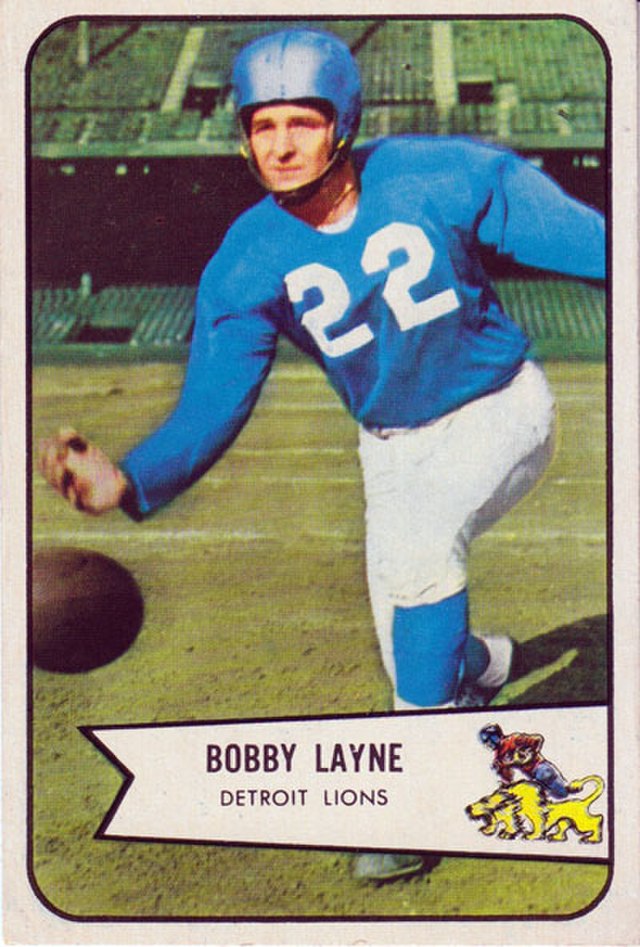One of the top experts in early football rules history Timothy P. Brown joins us on the discussion to explain the usage of Bobby Layne in two different offensive formations. Timothy Brown's FootballArchaeology.com has a daily football factoid that he shares that are really quite interesting in a short read. They preserve football history in a very unique way and we are quite happy that Tim has agreed to join us each week to go over some of his Today's Tidbits. Click that link and you can subscribe for free to receive them yourself each evening.
Bobby Layne
Bobby Layne
When Bobby Layne was Drafted by the Pittsburgh Steelers in 1948, they had expected to use him as a Single Wing quarterback as he was early on in his college days at Texas. He ended up being one of the most successful quarterbacks ever to play for the Longhorns. Layne was selected to four straight All-Southwest Conference teams from 1944 to 1947, and was a consensus All-American in his senior year. He had that extra year of eligibility due to World War II and a shortage of players it created, so and rules were changed to allow freshmen to play on the varsity. He played in the T-Fotmatio in the latter two years at Texas and had even better success in that offense.

Bobby was the third overall selection in the 1948 NFL draft with Pittsburgh and was the second overall selection in the 1948 AAFC Draft by the Baltimore Colts. Layne did not want to play for the Steelers, who were the last team in the NFL to use the single-wing formation, so his rights were quickly traded to the Chicago Bears. Eventually he left there after a year of sitting behind Sid Luckman and Johny Lujack. Halas taded him to the New York Bullldogs and in 1950 he finally found his NFL home with the Detroit Lions.
Credits
The banner photo is of Former National Football League quarterback Bobby Layne illustrated on a 1954 Bowman Gum football card with the Detroit Lions. Courtesy Wikimedia Commons and taken by the Bowman Gum Company.
A Very Special thanks to information obtained from the following brilliant internet sites: Timothy Brown and his FootballArchaeology.com website.


